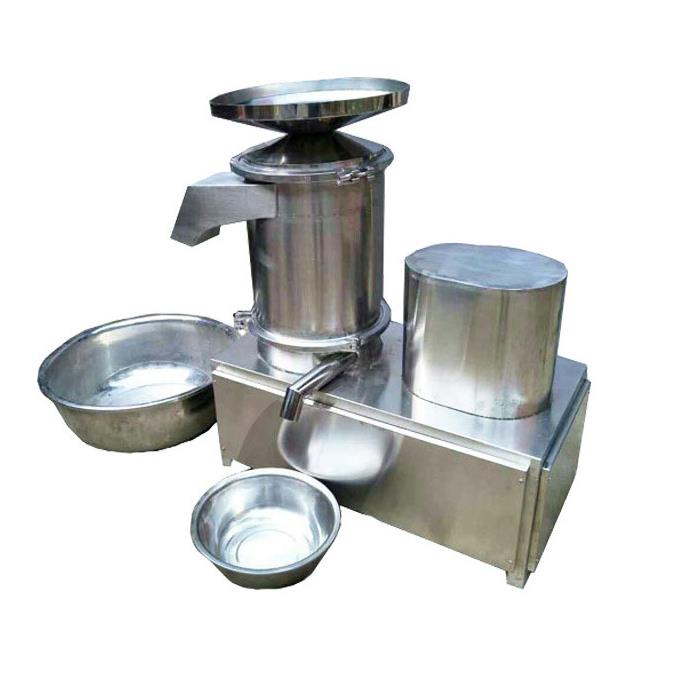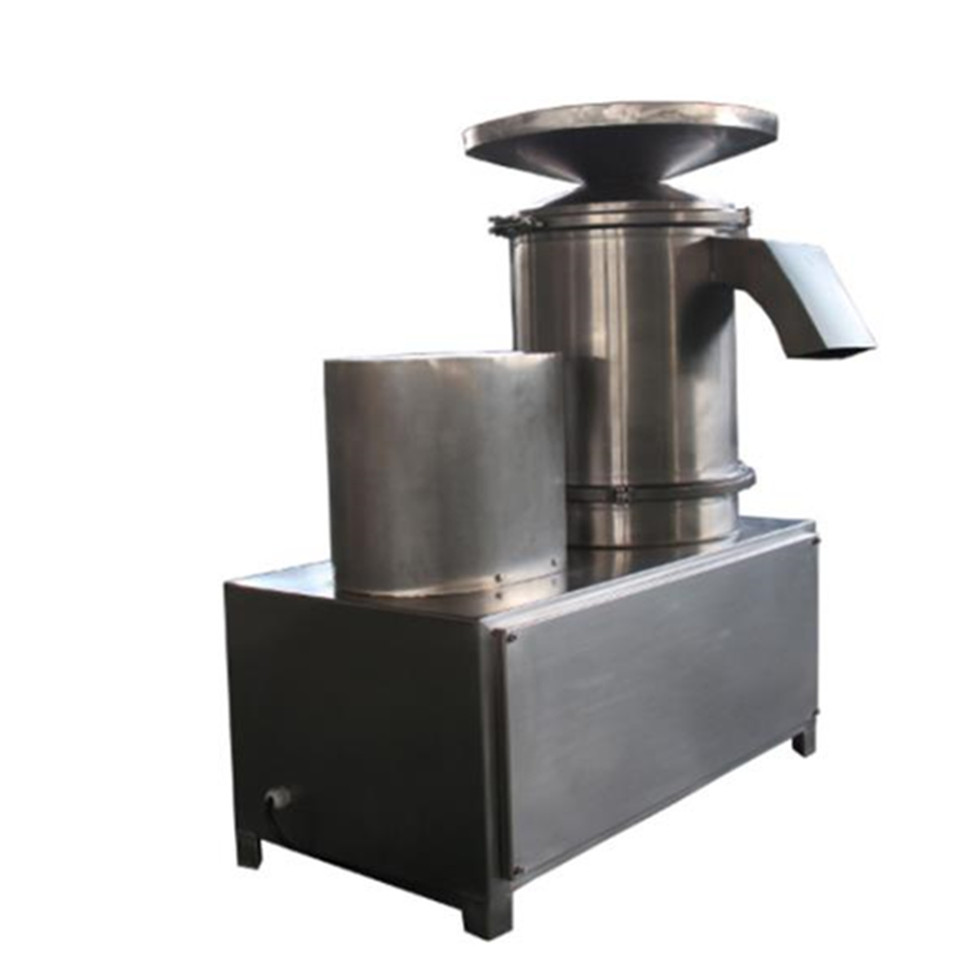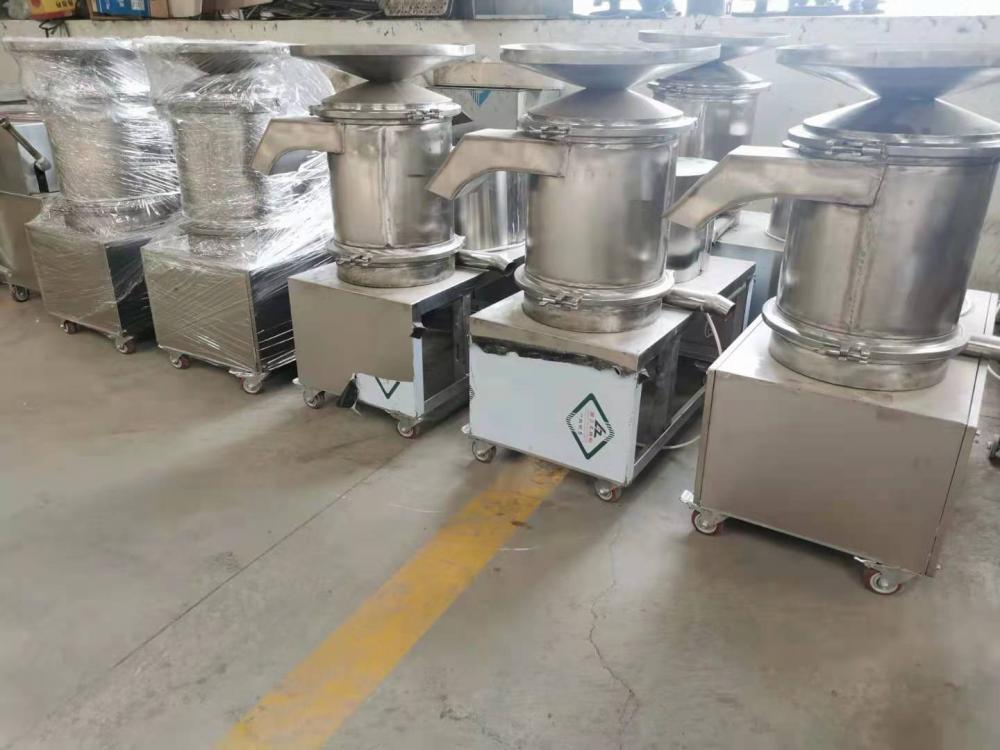Automatic Egg Breaking Cracking Machine
Egg shell separator is used for the processing of eggs and other eggs. In the process of processing, the cleaned eggs are put into the feed port, the egg liquid flows out of the liquid outlet below the egg shell separator, and the eggshell is ejected from the discharge port. The ejected eggshell is crushed small particles, which is easy to collect and transport.
The principle of the eggshell separator is similar to the drying barrel of a washing machine, which is operated at high speed to achieve the purpose of separating eggshells. In the process of use and the ratio of labor is 1:20, enterprises in the process of production and use greatly reduce production costs, save time and resources
In addition we also have other machines for u chosoe,such as spices Powder Pulverizer ,powder mixer,Capsule Filling Machine,capsule Polishing Machine,Capsule Counting Machine,tablet press,vacuum dryer etc
Food Industry Egg Breaking Cracking Machine,Restaurant Egg Breaking Cracking Machine,Best Selling Egg Breaking Cracking Machine,Latest Product Egg Breaking Cracking Machine,High Productively Egg Breaking Cracking Machine Jiangyin yongchang medicine machinery co,.ltd , https://www.ycgrinderline.com



Analysis of current status of LED lighting applications
With the gradual maturity of international LED lighting fixtures, the Chinese government has vigorously promoted the traditional incandescent and fluorescent light sources to be gradually replaced, especially in indoor lighting. At the same time, the development of electronic control technology, materials and technology has spawned a large number of excellent LED lighting products, adding more colors to the people's lives. It is well known that due to cultural differences around the world, various indoor lighting standards and forms of lamps have long been formed. What kind of subversion will LEDs bring? Will be the focus of the article discussion. Indoor lighting requirements and application status Indoor environment design includes lighting as an important component. Good lighting design is conducive to human health and safe and comfortable life. In reality, light is not only to make people see the existence of objects, but more to express spatial forms and create an atmosphere of the environment. The indoor natural light or lighting design is functionally designed to meet the needs of people with a variety of activities, but also to pay attention to the lighting effect of the space. Indoor lighting contains many places, personally think: but all natural light can not effectively cover the isolation space because of the space object, and can not be defined as indoor lighting, which includes the following main places and each has its own characteristics. (Only the examples can not be described one by one). (1) Residential lighting, the purpose of its lighting is nothing more than three: safety, visibility, atmosphere and so on. In traditional lighting, most incandescent lamps and fluorescent lamps are used as light sources to form lamps such as ceiling lamps, downlights, panel lamps, chandeliers, wall lamps, mirror lamps, table lamps, table lamps, floor lamps, etc., which are distributed in entrances, entrances, corridors, stairs, living rooms. , bedroom, bathroom, washroom, kitchen, dining room, study, gym, etc. (2) Office lighting, the main control points are: illumination, glare, comfort and so on. Most of the traditional lighting uses fluorescent lamps such as ceiling lamps, grille panels, grille spotlights, chandeliers, downlights, and desk lamps to meet the front desk, lobby, walkway, centralized office area, unit office area, integrated office area, conference room, Lighting needs in areas such as parking lots. (3) Commercial lighting, its main demand points: color rendering index, glare, color temperature, precise control of light spillage. In traditional lighting, track spotlights, downlights, grille spotlights, trunking lights, spotlights, light bars, etc. are used to reach the central display area, the passageway and the island, the glass display cabinet, the merchandise display rack, the glass window, and the dressing room. Lighting needs in areas such as lounges, checkout counters and walls. (4) Public places, such as hotels, hospitals, theaters, schools, libraries, stations, museums, gymnasiums, etc., are different in their respective needs, but the use of lamps is biased towards high lumen output, and the power is too large. Such as high-efficiency grille lamps, floodlights, wall-mounted dual-purpose lamps, downlights, spotlights, etc. The lighting requirements of each space are different. The requirements for color temperature, illuminance, uniformity, color rendering, glare, and maintenance factor are different. These IESNAs have detailed regulations. China's GB50034-2004 "Architectural Lighting Design Standards" also specify the residence. The requirements for commercial, industrial, and public buildings are not detailed here. LED lighting application status analysis is about 2000, some parts of China began to produce LED products with display and indication functions, such as some light switches, signs and other products; about 2002, mobile lighting began to use LED as the main Light source; around 2003, LED decorative lighting began to sell; around 2004, the main lighting began to use LED. This process has a lot to do with the technology development of LED itself, from 5lm/W to 150lm/W now, its time It is very short. Traditional lighting design is to separate the light source from the light fixture, and use the light fixture to match various light sources to meet the lighting requirements. In the initial LED lighting applications, the light source, the bracket, and the power supply are integrated, such as the current LED panel light, LED downlight, LED ceiling light, LED track spotlight, LED flood light, LED wall light, and the like. There are also light sources that replace the route, such as LED bulbs, LED-PAR lamps, LED-MR16 spotlights, LED fluorescent tubes, and so on. The above LED light sources and lamps are almost full of the entire lighting market. From the Guangya Exhibition in 2012, the above application conditions can be clearly seen. Various light sources and lamps of various shapes are simultaneously coordinating heat dissipation, light distribution and power supply. Aspects are needed to achieve replacement. Development of LED indoor lighting fixtures From the application point of view, where will LED indoor lighting fixtures go? I think it will develop in the following aspects: (1) The form will change. Traditional lamp forms such as downlights, ceiling lamps, high ceiling lights, and grille lights have almost fixed dimensions. Because traditional light sources have large illumination angles and LEDs are directional, traditional lamp forms are no longer suitable for LEDs. . As for the form of development, personal feelings have much to do with ergonomics. Social development has formed too many individual styles, and more and more choices. Which company's products are more suitable for ergonomics, more suitable for life and situation, plus appropriate marketing. It will certainly occupy the mainstream consumer market. When the market accepts a high degree of products, it naturally forms an industry standard. (2) The installation method is changed. Nowadays, the style of interior decoration has been changing with each passing day. Seeing the light is not the goal pursued by interior designers and lighting designers. The simpler installation method will be more conducive to the end consumers. For example, the installation method of the Japanese ceiling lamp is a hanging structure, and the domestic ceiling lamp is still fixed by steel nails. Chinese designers will definitely make breakthroughs in this piece. (3) The structure of the luminaire changes. For end users, the simpler, the more DIY lamps will become more popular. LED heat dissipation module, light distribution component, lighting module, power supply driver module will form a unified. This way, whether it is an interior designer, a lighting designer, or an end user, they are free to combine. (4) Changes in indoor lighting standards. There has always been such a rumor: first-class enterprises set standards, second-rate enterprises follow the trend, and third-rate enterprises are busy processing. Now the country has developed LED lighting standards, which are not very rigorous, and most of them are borrowed or copied. Of course, this is not a way, but China’s large market demand, many manufacturers in the design and manufacture of light sources, lamps, has not been very deep into the market, enterprises are doing what the market needs, the country is making unrealistic The standard has caused vicious competition for enterprises. For example, the bidding conducted by the National Development and Reform Commission, even the first time the standard was scrapped, is very ironic. This situation will definitely change with actual needs. (5) The cost of lighting will change. The development of a new industry will take a long time to mature. The current chip cost, packaging cost, and lighting manufacturing cost are too high, which will lead to a large number of professionals and Technology to solve this problem. For example, color stability and color temperature stability, automated assembly lines, and the like. (6) Intensive control schemes, traditional lamps and existing LED lamps are almost always controlled by one lamp. From the characteristics of LEDs, intensive control is more important to play the advantages of LED itself. This type of control is also required in home, office, commercial, industrial, and public places.